

In today's article, I will tell you a little more about a place that is not known to many tourists visiting the Tri-City. Certainly, many of them are surprised that there is quite a large… island within the borders of Gdańsk.
The Sobieszewo Island, because we are talking about it, is the third largest island, after Wolin and Usedom, on the Polish Baltic coast. Interestingly, it was the only one created as a result of human activity.
But the interesting facts about Sobieszewo do not end there. I encourage you to read and visit this amazing place - I can assure you that many of my guests were enchanted and are a constant point for them when returning to the Tri-City, among others because of the natural values. And... I also like them very much.
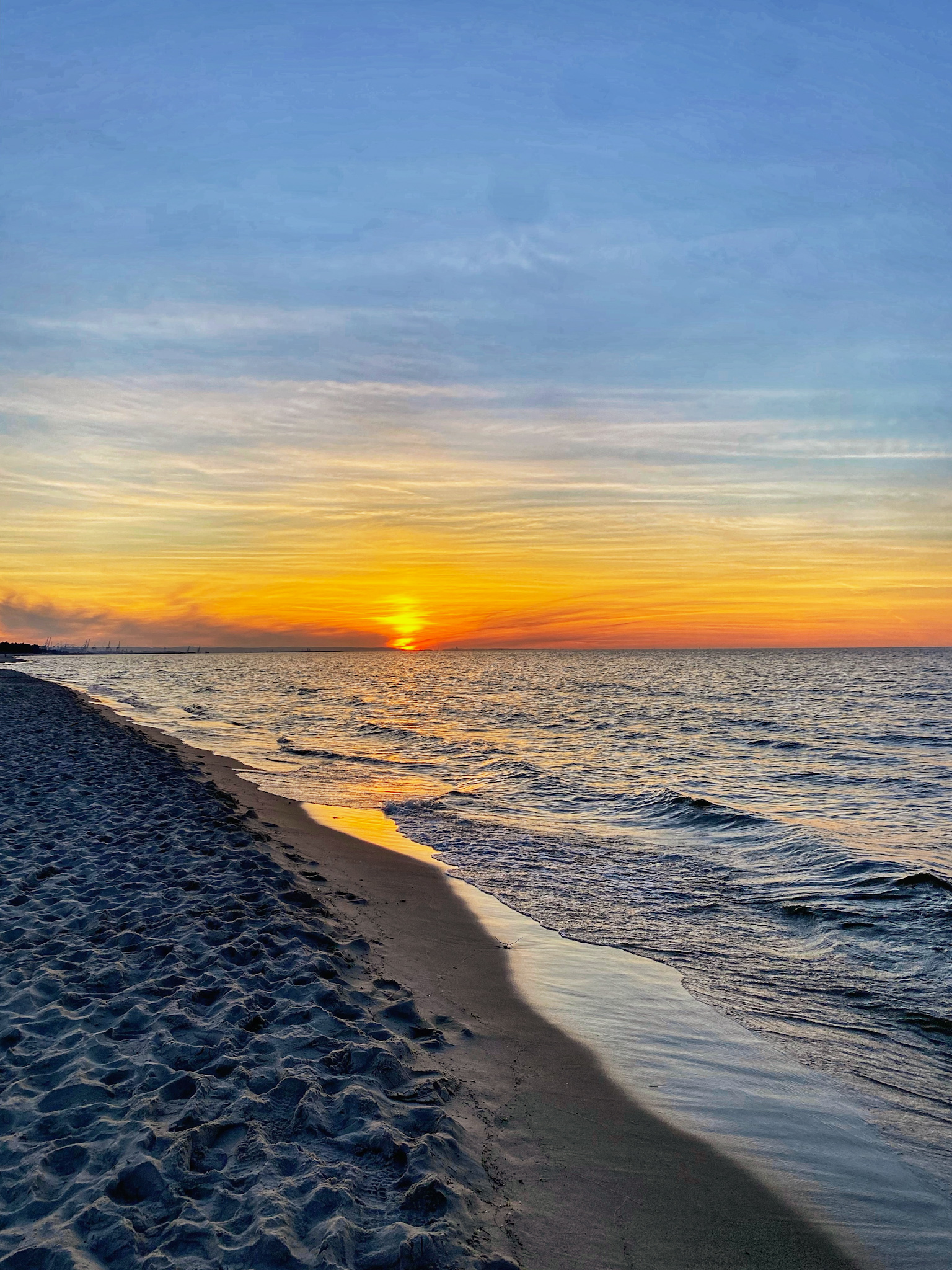
Photo: Beach in Sobieszewo
Although located within the borders of Gdańsk, it is slightly more than 15 km away from its center. This distance is enough to feel the atmosphere of a small, charming, seaside town, close to a large, bustling city with a rich history.
Speaking of which, the origin of the Sobieszewo Island is related to the Vistula River and its dynamic activity in the delta area. In the nineteenth century, a huge ice jam interrupted the Vistula Spit and created a new mouth of water to the Baltic Sea by the Vistula Śmiała. It was the first step to isolate the island. The second, at the end of the 19th century, was the excavation of the Vistula piercing, the presence of which was to solve the flood problems in Żuławy. Thus, the strip of land separated to form the independent Island of Sobieszewo, flooded on all sides with waters.
As you can probably guess - in order to get to Sobieszewo, it is necessary to use one of the bridges or the ferry, which I will tell more about in the next post. Today we will focus on the amazing natural values of this area, that is why, when driving from Gdańsk to Warsaw, it is worth taking off the road and taking a breath among the singing birds.
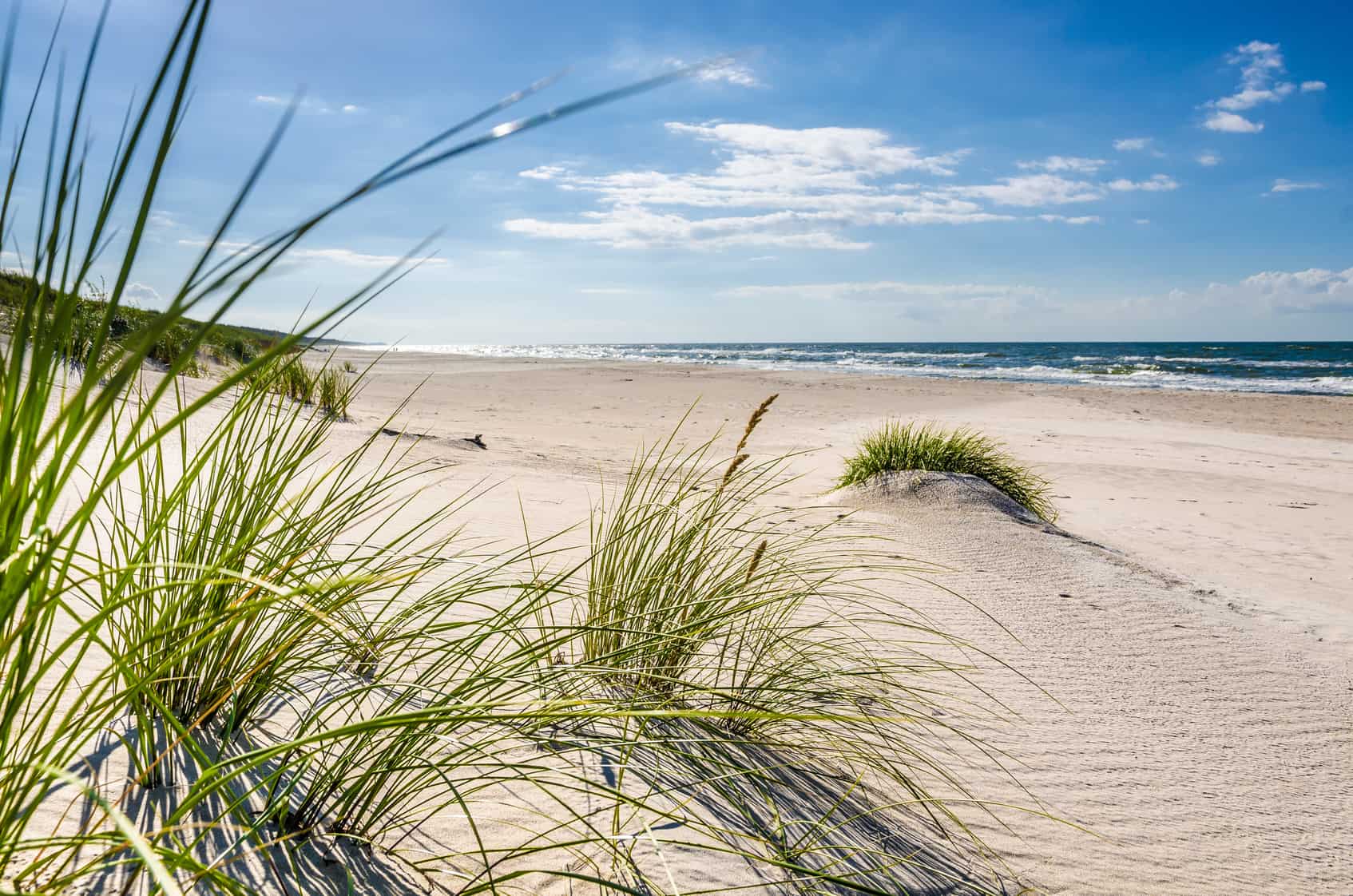
Photo: A sunny day on the beach in Sobieszewo, Gdańsk
From spring to early autumn, the island is bathed in greenery. Lovers of peace and quiet will find themselves perfectly on forest paths, contemplating the sound of trees and the sea. Close contact with nature was guaranteed when the area was declared a Protected Landscape Area, and also when it was granted the status of an ecological island.
High natural diversity results mainly from the delta location. We can meet a whole range of various habitats with very specific fauna and flora, incl. mixed forests and pine forests, willow thickets, seaside beaches, dunes, ponds and lakes, meadows and arable fields. In short - it's hard to find a more interesting piece of land hidden in the arms of the Vistula and the sea.
For this reason, every year lovers of blissful relaxation come here, but also nature lovers and, above all, ornithologists. They include both enthusiasts and scientists who make observations and measurements for their own pleasure and educational purposes. And the area and population for research are great, because on the island's surface of 35 km2 there are two unique nature reserves: the Bird's Paradise Reserve and the Mewia Łacha Reserve.
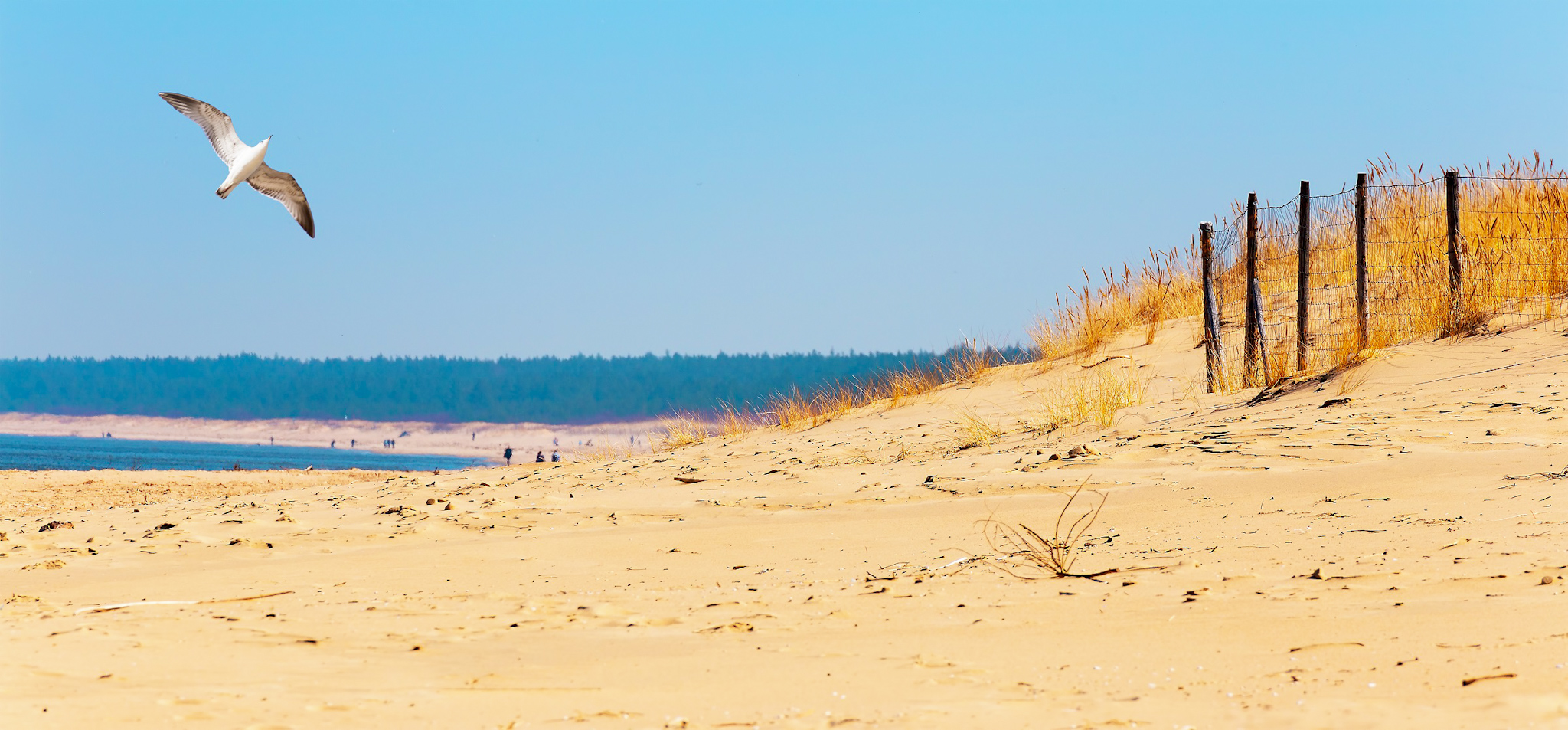
Photo: Beach in Sobieszewo, Gdańsk
It was founded over 60 years ago. Located in the north-western part of the Sobieszewo Island, it has almost 190 ha. The decision to create the reserve was due, inter alia, to due to the need to protect and preserve the coastal lakes complex (Karaś Lake and Ptasi Raj Lake), as well as dunes and swamps, which are the resting places of migratory birds during their annual migrations. Free admission is possible all year round.
More than 200 bird species can be found in the reserve, 25% of which have chosen this area for nesting and rearing their young. A trained eye, preferably equipped with binoculars, can spot, for example, a little tern, a bittern, a mustache and a ringed plover. Of the more common birds (though certainly not in such numbers), in the open water surface, we can see flocks of ducks, geese, swans, gulls and coals. Their number is estimated at up to 20,000 individuals! In addition to birds, reservations are over 300 species of plants, and sometimes you can also see seals.
To facilitate contact with nature, in 2004 a nature-didactic path was opened, marked with an orange duck symbol. For nature lovers, there are many information boards and two observation towers.
I encourage you to take a walk along the entire route. Depending on how insightful you are, the duration of the trip, although it is not very long (about 6 km), may be 4 hours or more. Alternatively, e.g. for families with children, there is a chance to shorten the route and make it halfway through this time, but unfortunately the observation towers will be omitted. It is a pity, because they offer a view of the coastal lakes, the beach and the Bay of Gdańsk.
The beginning of the path is at the entrance to the reserve - about 100 meters from the end of the bus 186 in Górki Wschodnie. If you used your own car, a small parking lot is also located here.
If I can advise you on something, be sure to have binoculars, which will significantly improve your observations. The best time to see birds as they migrate is in spring (March-May) and fall (October-November). But in summer it will also not be boring.
The second thing to remember is the anti-mosquito remedy, as in summer there may be more insects in wetlands than our often scantily clad bodies would like.
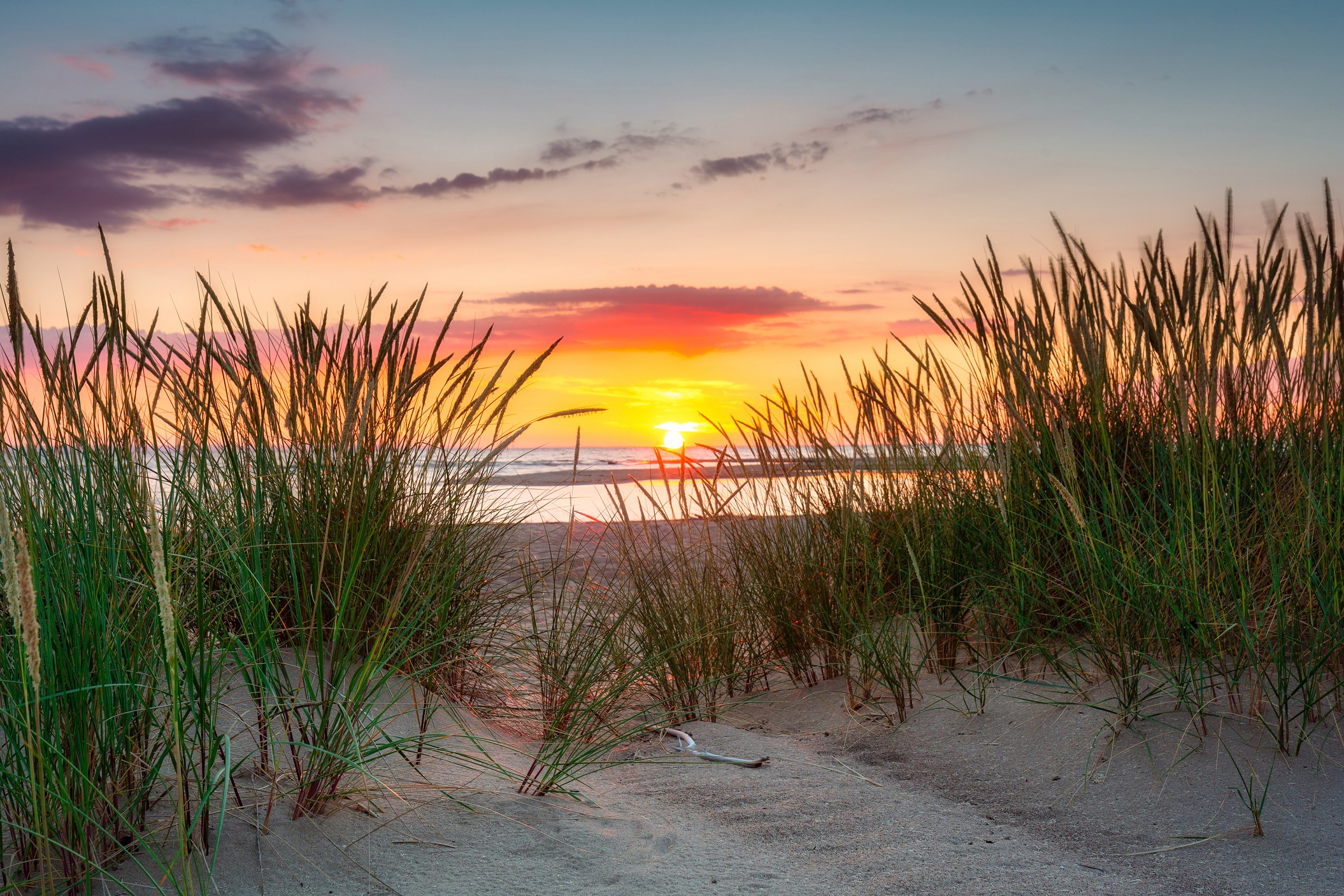
Photo: Sunset on the beach in Sobieszewo, Gdańsk
At the opposite end of the Sobieszewo Island, near Świbno, there is a second, younger (established 30 years ago) nature reserve - Mewia Łacha - with an area of 19 ha. Its much larger part is located on the other side of the Vistula River near the village of Mikoszewo.
This area is subject to strong waves from the sea, which results in a dynamically changing coastline. We can expect the formation of periodic lakes, islets and vast shallows. There are also intense delta processes here. All this has a positive effect on the flora of the reserve, rich in about 450 species of plants, including which is under the protection of the sea holly.
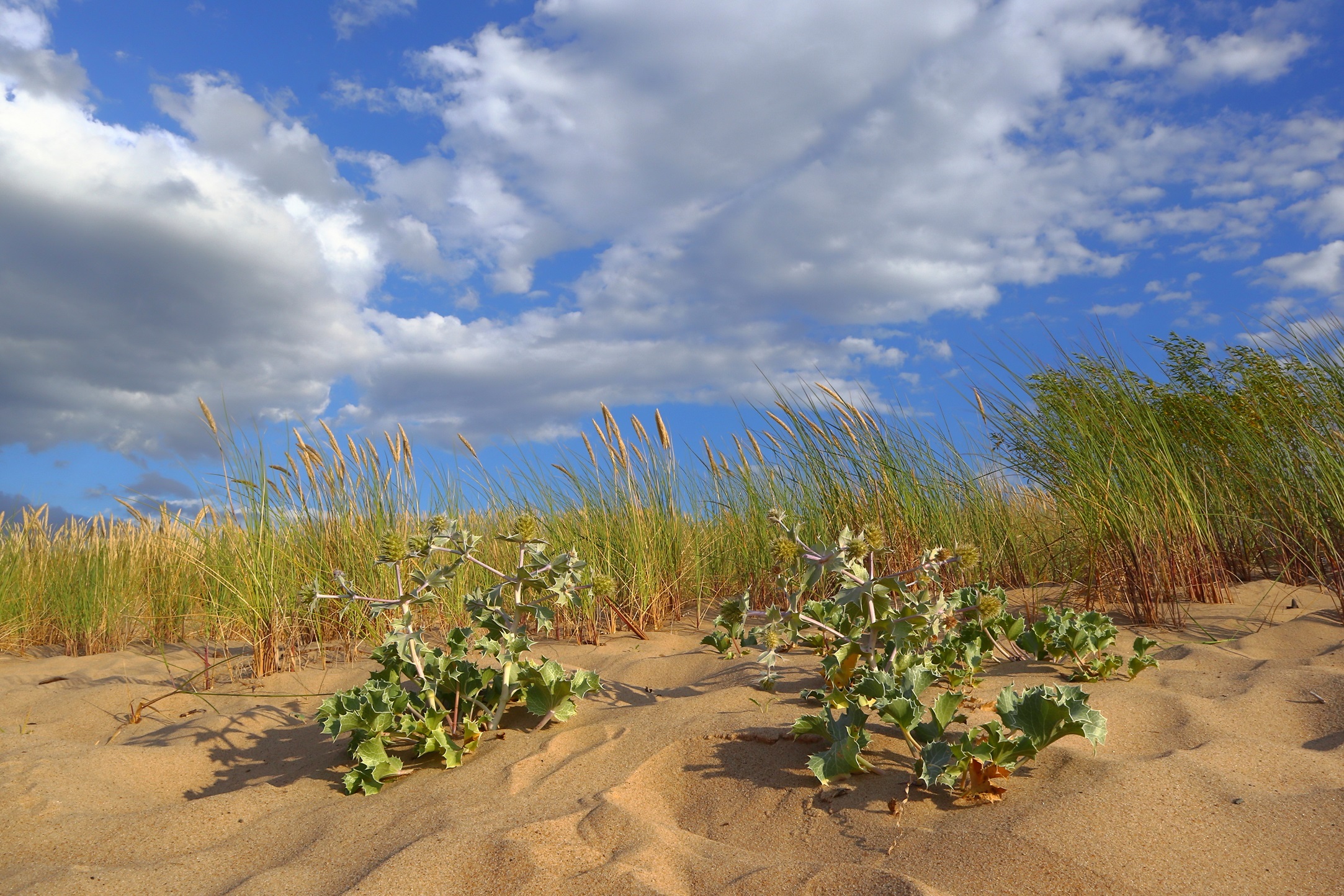
Photo: Sea Holly, Sobieszewo beach in Gdańsk
The area of the Vistula Mouth is one of the most interesting ornithological areas in Poland (and perhaps in Europe). The purpose of the reserve was to care for the preservation of nesting and resting places before and after migration for nearly 275 species of birds, including rare species of terns.
But in addition to this huge variety, you also need to be prepared for huge flocks of birds of one species! This place is teeming with life. For example, during summer feeding, the little gull gathers in herds of over 40,000 individuals, and in winter ducks and gulls are sometimes “to the horizon”.
Mammals lovers will also find a real treat - from the viewing platform in Świbno, you can often see seals lying in the sun. Anyway, if you're lucky, you can see them all along the island's beach, sometimes even with seal puppies.
Due to the importance of the role of the Reserve, please remember that during the breeding season of birds (April-August), you can walk on Mewa Lasza only in accordance with the markings of the trail. Also, be quiet so as not to scare the nesting animals. If you have a four-legged friend with you, don't forget to leash and make sure that he doesn't disturb the birds.
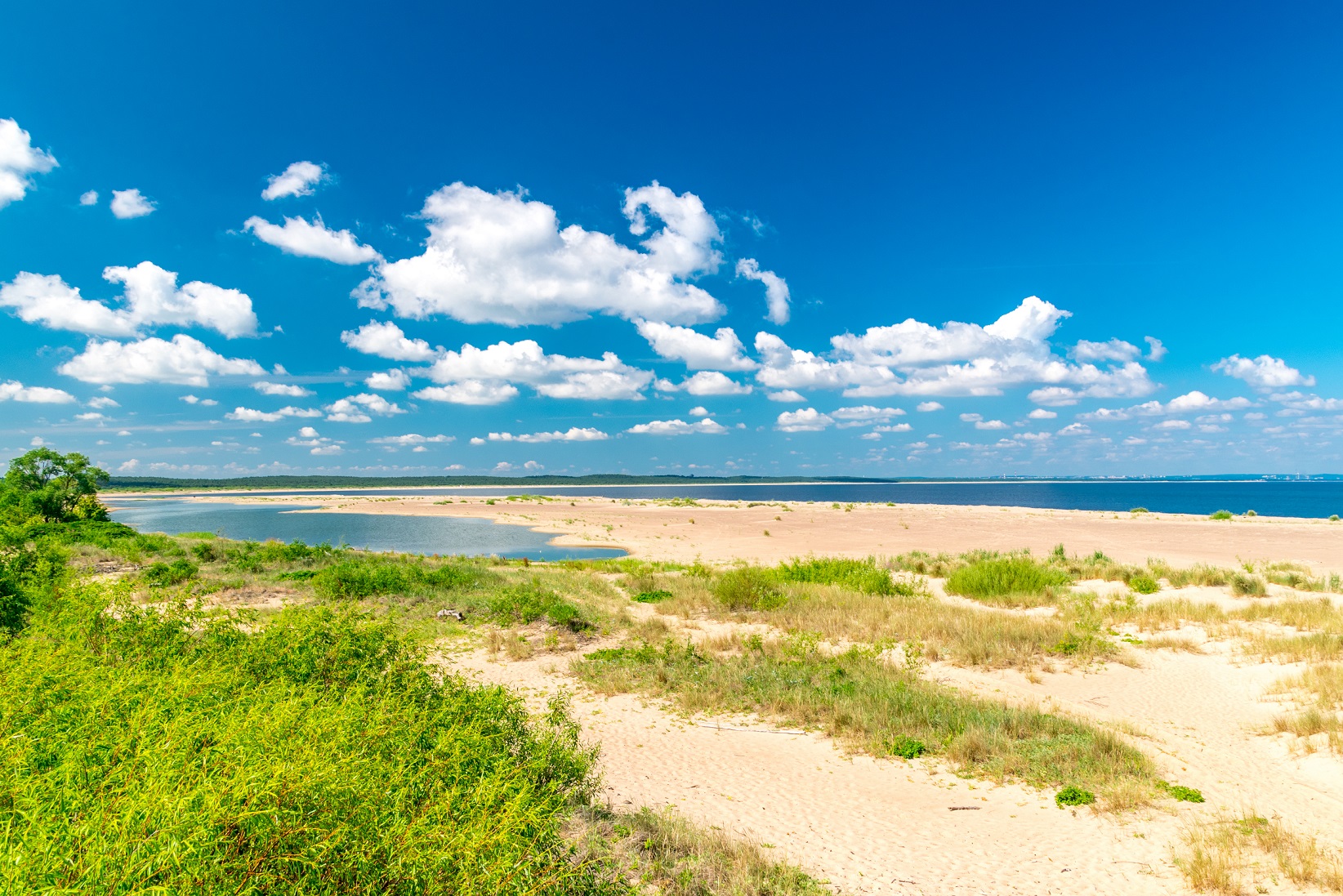
Photo: Coastline, beach in Sobieszewo, Gdańsk
Although the Sobieszewo Island is very close to the bustling and modern Tri-City agglomeration, it has retained its natural, still not fully discovered character. From the perspective of someone who feels great in the bosom of nature, for whom the singing of birds and the sound of the waves are a real reward, I can say that if you come to Sobieszewo Island once, you will most likely come back regularly. I wish you a lot of delight!
If you want to learn more and, for example, take part in bird ringing, I encourage you to visit the website of the Ornithological Station of the Polish Academy of Sciences. Perhaps this year it will be possible. A lot of information about the island itself can also be found on the dedicated portal.
Check out the other blog posts: